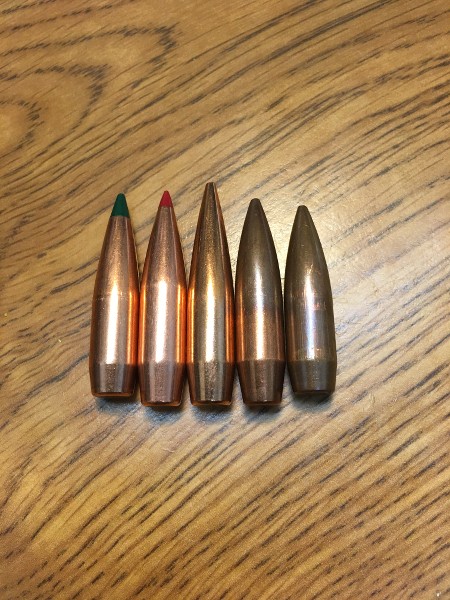I am preparing to do some velocity ladder testing (i think that is what its called) for my 308. I worked up to max with no pressure signs. I am planning to work back down from max to get a nice consistent and stable velocity window.
When working up to max I usually go in increments of roughly 1% of max. so for 223 about 0.2g increments. for 308 and 30-06 usually 0.5g increments.
For testing for velocity, working back down to find a good stable spot I am somewhat unsure. I have been trying to improving my processes and am trying to have a reason behind them. I was debating on 0.2g or 0.3g increments. 0.1g increments seem too small and I don't know that I can consistently measure that accurately anyway. 0.2 is similar problem. I am concerned that 0.3g or 0.4g increments might be too coarse. to give me that data I need. I am just not sure how to proceed.
Keep in mind I am using a basic balance bean scale. And while I am trying to make some nice target ammo, its going in a hunting gun not a target rifle. Just trying to follow all the steps and not take short cuts to make the best ammo I am able to at this point.
Mossberg Patriot in 308
BL-c(2) powder, Max 0f 47.0g
CCI Large Magnum Rifle primers
LC16 brass (I tested up to max, no pressure signs)
Hornady 168g OTM bullets
Bullet jump of 0.065 at max max length COL.
When working up to max I usually go in increments of roughly 1% of max. so for 223 about 0.2g increments. for 308 and 30-06 usually 0.5g increments.
For testing for velocity, working back down to find a good stable spot I am somewhat unsure. I have been trying to improving my processes and am trying to have a reason behind them. I was debating on 0.2g or 0.3g increments. 0.1g increments seem too small and I don't know that I can consistently measure that accurately anyway. 0.2 is similar problem. I am concerned that 0.3g or 0.4g increments might be too coarse. to give me that data I need. I am just not sure how to proceed.
Keep in mind I am using a basic balance bean scale. And while I am trying to make some nice target ammo, its going in a hunting gun not a target rifle. Just trying to follow all the steps and not take short cuts to make the best ammo I am able to at this point.
Mossberg Patriot in 308
BL-c(2) powder, Max 0f 47.0g
CCI Large Magnum Rifle primers
LC16 brass (I tested up to max, no pressure signs)
Hornady 168g OTM bullets
Bullet jump of 0.065 at max max length COL.
Last edited:

